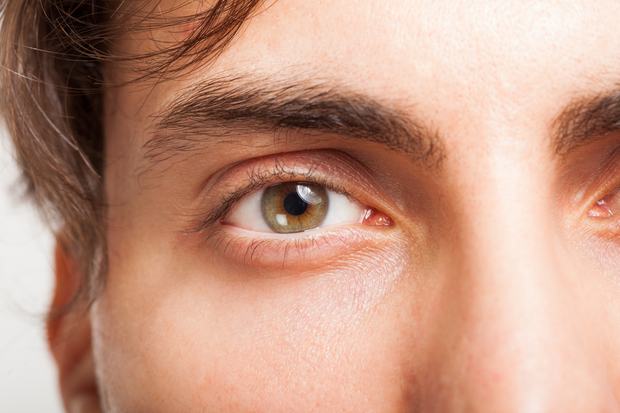Eyes May Offer Window into Cardiovascular Disease

Vision problems may sometimes be the only symptom a person has of a serious cardiovascular condition, a new case report suggests.
In the case, a 77-year-old man in Greece experienced three short episodes of blurred vision in his right eye. The five-minute episodes stretched over an hour in total, and after each episode, his vision returned to normal.
Concerned about this sudden problem, the man went to the eye clinic at his local hospital.
An eye exam showed that the man's vision was good, and the pressure within his eyes was normal. But when the man's pupils were dilated and a doctor looked more closely into his eyes, the culprit was revealed: A blood clot was blocking the blood supply in a branch of his retinal artery, which supplies blood to the lining at the back of the eye, according to the report of the man's case.
Such clots are typically made out of cholesterol and clumps of platelets (blood cell fragments), and in the case, the clot came from the man's carotid artery, the main artery that brings blood to the head and neck, said Dr. Ilias Georgalas, an assistant professor of ophthalmology at the National and Kapodistrian University of Athens, in Greece.
But the tiny clot was a serious health problem — people with a blockage in the eye's central or branch retinal artery have a high risk of a serious or fatal stroke, said Georgalas, who treated the man and was one of the co-authors of the case report published online today (Nov. 25) in the New England Journal of Medicine.
Vision problems and heart disease
Sign up for the Live Science daily newsletter now
Get the world’s most fascinating discoveries delivered straight to your inbox.
The case highlights the fact that visual symptoms can be a warning sign of a cardiovascular problem, Georgalas told Live Science. [16 Oddest Medical Cases]
The 77-year-old man had no history of eye problems, but he had high cholesterol levels and had been taking statin drugs for the past five years to reduce his cholesterol.
The man was diagnosed with "amaurosis fugax," a condition in which a person loses vision in one eye, usually for a few minutes at a time, because of an interruption of blood flow in an artery.
The clot in the man's eye was a fragment of a plaque that had formed in the man's right carotid artery, and then traveled through his bloodstream and landed in one of the smaller branches of the retinal artery in his eye, Georgalas said. This temporarily closed off the blood supply to his right eye, which explains the man's blurred vision, he said.
Examining the eyes is an easy way for doctors to have a look at the vascular system, the network of blood vessels in the body, which includes the arteries and veins, Georgalas said. It's very rare for a vascular problem in other parts of the body to not be seen in the blood vessels within the eyes, he said.
For this Greek man, his blurred vision led doctors to detect that the blood flow through his right internal carotid artery was 80 percent blocked because of atherosclerosis, or hardening of the arteries.
He needed a carotid endarterectomy, a surgical procedure that removes plaque buildup in a narrowed artery, and can prevent a stroke. Twelve months later, the man's vision was normal and he had no eye problems, according to the case.
For a relatively high number of people with severe carotid artery blockage, temporary visual loss may be the only symptom, Georgalas said.
Any temporary, painless loss of vision should not be ignored, he said. The eyes can provide a good indication of a person's health throughout the body, and visiting an ophthalmologist can often be the first step in diagnosing more severe health problems, Georgalas noted.
Follow Live Science @livescience, Facebook & Google+. Originally published on Live Science.
Cari Nierenberg has been writing about health and wellness topics for online news outlets and print publications for more than two decades. Her work has been published by Live Science, The Washington Post, WebMD, Scientific American, among others. She has a Bachelor of Science degree in nutrition from Cornell University and a Master of Science degree in Nutrition and Communication from Boston University.
Flu: Facts about seasonal influenza and bird flu
What is hantavirus? The rare but deadly respiratory illness spread by rodents









